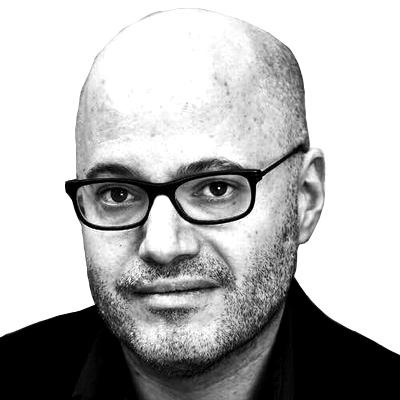A 21-year-old Queens College student wrote a song in his parents’ bathroom about how we would all be swallowed up by death. Do your best to make music, but silence will defeat you in the end. “Hello, darkness, my old friend,” he began, singing to the tiles. This was not an obvious chart-topping topic, yet “The Sound of Silence” eventually became a No. 1 hit, and Paul Simon, with his childhood pal Artie Garfunkel rocking a harmony, broke very, very big.
An astonishing trail followed—with and without Garfunkel, in and out of South Africa, Brazil, giving us the dopamine for the brain, rhythm for the body, and tenderness for the heart—all of it still crazy after 60 years. A Paul Simon song knows what you’re thinking, how you’re feeling, how you’re soft in the middle when the rest of life is so hard, how you and everyone you know are slip sliding away. It’s all a redemption narrative. It’s personal and it’s for the world.

When he sang, “Losing love is like a window in your heart,” he was singing about his divorce from Carrie Fisher, but he was really singing for anyone who had lost love and was still reeling. Simon lamented that he could not sound enigmatic like Dylan. He always sounded sincere. Maybe it was because he was part of something larger. “There is something where the music is coming through you,” he said. “You’re a part of it, but it’s not starting with you—it’s coming from somewhere.” O.K., but when he sold his catalogue, he kept the $250 million.
The conduit is now the subject of a documentary by Alex Gibney, whose enormous IMDB credits include films on Enron, Hunter S. Thompson, Eliot Spitzer, and Steve Jobs. His 2015 documentary Sinatra: All or Nothing at All was about the farewell concert that was not a farewell concert but a poignant exit before the Chairman demanded another entrance. Simon, who reached out to Gibney after seeing that documentary, must have recognized himself.

He had a farewell album in 2016 and a farewell tour in 2018, but then a voice came to him in a dream, telling him he would write something called Seven Psalms, even providing lyrics. Simon would transcribe like a biblical prophet. The message would have something to do with dying, right back to where he started in “The Sound of Silence.” Gibney’s In Restless Dreams follows Simon’s quest to record the album after the final album, while he was losing the feeling in his hands and his hearing in his left ear, first gradually, then suddenly.
We see footage of a young Paul Simon with audio engineer Roy Halee, recording at the bottom of an elevator shaft to get the right drum sound for “The Boxer.” The fighter still remains. We see Simon trying to retrain his brain with a device on his tongue. We see him in tears sitting in a church with Edie Brickell, his wife since 1992, while a choir performs, a performance that sounds heavenly yet never made it into the album. When Wynton Marsalis shows up—his friendship with Simon goes back to Simon’s benefit performances with Jazz at Lincoln Center—he gives him a big, cathartic hug, and Simon cries some more. “I lived a life of pleasant sorrows. Until the real deal came,” he sings on Seven Psalms.

“The artistic process is about real shit,” Gibney tells me. “Because I was around when he was doing the work, it was like Picasso painting. Paul needed an audience, particularly when it was hard for him. He was having issues with his hands. There was one day when he came in with a huge bag of Theraguns, a muscle relaxer for his hands. He had issues with his playing, his hearing, and his singing, and he let us watch him struggle through that. That was both very generous and vulnerable. But it also helped him, because he knows how to rally for an audience. The extra energy was useful to him. Watching him in the present gave me more insight into the past.”
Listen to Seven Psalms and you’ll hear how remarkably little Simon’s voice has aged, and how his guitar chops have remained intact. But he knows not to get too attached. Marsalis advised him to keep it rough, let people hear the struggle. Simon considered that—when faced with a musical challenge, he said he wondered what Marsalis would have thought—but the appearance of effortless beauty made the poignance even harder to accept.

When Brickell sings, “Heaven is beautiful. It’s almost like home,” I cannot listen without tears. We want to hear the songwriter of “The Sound of Silence.” We’re not ready for actual silence. Losing love is a window in your heart, but what about losing everything? “The big mystery about life,” Simon says in the film, “you can never solve the mystery. That’s what’s so great about it. You don’t want to solve it.”
After Seven Psalms, Simon went back to doing what he was doing before: writing songs. He’s still working out how to perform with the one good ear, and he hasn’t given up. Neither should we. We’re on our way. We don’t know where we’re going.
In Restless Dreams: The Music of Paul Simon premieres on MGM+ on March 17
David Yaffe is a professor of humanities at Syracuse University. He writes about music and is the author, most recently, of Reckless Daughter: A Portrait of Joni Mitchell. You can read his Substack here


